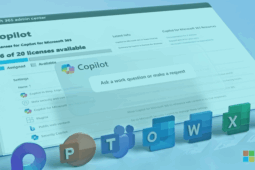
Many of us who work in IT encounter vendor and case management issues that are outside of our experience. There are times when we need external help to solve problems. Unfortunately, most vendors do not promise zero-hassle support. In fact, experience has proven that dealing with Support is often a major hassle.
To help reduce the pain as much as possible, I’d like to share some knowledge and techniques for managing vendors that have worked for me over the past two decades. With this guide, you can escalate any case and ensure expedient resolution. But before diving in, be prepared to dedicate between 2-8 continuous, uninterrupted hours to bring the issue to resolution. Not every issue is worth this level of investment, so pick your battles!
Guiding principles for vendor and case management
- If you are not on the phone or meeting online with the support team, then they are not working on your case. Period. You cannot allow real-time communication to end, either on your part or that of the engineer, regardless of device (phone, online, etc.).
- You cannot maintain priority if you are not immediately available to work on the case. The moment that you or a colleague cannot maintain availability, the vendor will lower the priority of your case and work on something else. But this shouldn’t be a problem because you won’t be hanging up the phone… right?
- You should not re-queue a case to a new engineer. The time lost explaining the problem will be significant.
- Open new cases at the start of your business day. This ensures that you will be aligned with the shift of the support team you are working with. The only exception is priority cases that you intend to work on continuously until resolved.
Case opening and immediate escalation
Begin vendor and case management issues by preparing a detailed write-up of the problem. It should describe the issue in detail and have a meaningful subject. It should also provide the technical details required to understand the problem. Open your case with the service provider using their portal so that you can upload the detailed write-up as well as any attachments.
Once your case is opened, call your service provider and request that your case be escalated. Service providers will typically ask you to explain why your case needs to be escalated and want to limit escalations to outages and major incidents. You will need to justify your escalation of the case.
Here are a few options you can use:
- The issue has significant executive visibility.
- The client’s environment is/was severely impacted by the issue.
- Redundancy in the environment is compromised.
- Excessive cost of the current/previous incident. For example:
“Our client lost a million dollars in revenue because of that system failure. Their executive team is demanding a root cause analysis. Following this incident, our mutual client, who is nearing renewal, is considering other manufacturers.”
Note that using strong language like “mutual client” positions us as collaborators working with the vendor to please the client.
While most service providers will resist escalation, they cannot outright refuse your escalation if you stand firm. Resist the pushback and they should allow the escalation.
If the frontline resource you are working with resists heavily, you can break out the big guns:
“Please either escalate the case or bring your manager on the line to discuss why you refuse to escalate.”
This kind of communication can be stressful, but it helps to put the pressure on the vendor to act in your mutual client’s best interests. It also removes confrontation from the situation.
Statements such as, “I’m sorry to insist but (my manager/our mutual client/our client’s executive team) is giving us significant pressure to address the issue,” can be helpful. It is beneficial if you can act as the nice representative of your company working with the vendor to resolve the issue while facing pressure together from your client.
Dealing with your first engineer
Overview
In most cases, your vendor and case management request will be received by an engineer working in a basic frontline support team. They are unlikely to be part of the senior teams that handle more advanced cases. Your goal is to escalate the case to the most senior level as rapidly as possible. If you are working with the senior team, then further routine escalation is not possible, however, there are resources that they have access to that they can leverage.
The first hour with your engineer
Begin by evaluating the skills of the engineer you are working with. Set expectations if they do not immediately show competence.
Start with something easy:
“This issue has a significant impact on our client’s environment, I don’t like to pressure you, but we’ll need to be able to demonstrate progress on this issue in the next half hour.”
If the situation has not improved within the first fifteen minutes, or the engineer is too junior, you can increase the pressure:
“I’m very sorry, but I’ve just heard from my manager and the client’s executive team is now increasing pressure on us. I would like to give you more time to work on this issue, but I’m afraid I’ll need to insist that you demonstrate progress or escalate the case in the next fifteen minutes.”
As with most vendors, an engineer is not allowed to refuse escalation, however, they are encouraged not to escalate inappropriately. If you get pushback after an engineer has been given sufficient time to understand the situation but is not making progress, ask that they bring a manager on the line. This typically forces them to immediately escalate the case.
If they still refuse, you can go with the most extreme option. Tell them you will put them on hold, call their support number again, and request a manager through their frontline support. This is an incredibly aggressive move, but one I have used to address a particularly resistant and inept engineer. The outcome? My case was escalated.
The escalation
If they say they are going to escalate the case, ask them to confirm they are escalating to a senior team. They may try to “escalate” to a more skilled colleague or a technical expert within their team rather than a senior team. This can be acceptable but must also be time-limited. Accept the escalation but indicate that if the new resource cannot make progress in thirty minutes, you will need to insist that they escalate to a more senior team.
Never hang up or leave the online meeting
The moment you are no longer on the phone with your engineer, they can switch to another priority. If you need the issue resolved right away, you cannot hang up or leave. If the engineer wants to review logs, say that you are happy to hold the line and request updates every ten or fifteen minutes. If their shift is ending, request a live transfer to another engineer on the next shift to continue the investigation.
Final thoughts on vendor and case management resolution
Resolving issues is never an easy task, especially when you are faced with layers of escalation. Reducing frustration is achievable by staying calm and firm while dealing with the issue. Most of the time, vendors will work with you if you maintain continuous and collaborative dialogue. Stay the course and be patient.
On the odd occasion when things feel like they are about to go sideways, you can also try one of the following additional tactics:
The “Manager”
Have your manager (or someone pretending to be your manager) join the call and express the immediate need for escalation, additional resources, or whatever, based on executive visibility and outage cost. It helps if “the manager” is aggressive and loud as this leaves you the chance to play “nice cop.”
Involve your account team
Support organizations listen to internal communications from their sales teams, both account managers and sales engineers. If you are having a difficult time getting your vendor and case management issues resolved, involve them in the escalation. This is particularly effective if you are currently considering a purchase, as you will definitely have your Sales team’s attention and they will push Support hard on your behalf.
Call ZIRO!
We have been helping our clients with our own world-class services and support by proactively managing relationships, support staff, and escalations with vendors since 2010. So, if you need an ally to help resolve your vendor and case management issues, don’t be shy – reach out. We welcome any opportunity to remove the hassles outlined above. We also love a good “conversation.”
PS: You may find this video a helpful example as it offers some basic tips for getting the most out of Cisco TAC…
Ready to take your unified communications from headache to hassle-free?
No throwing darts at proposals or contracts. No battling through the back-end. No nonsense, no run-around.



